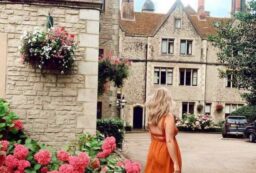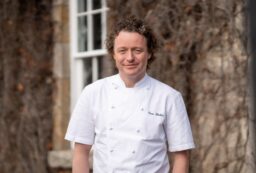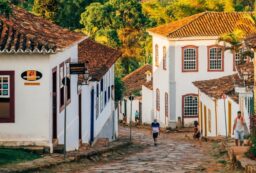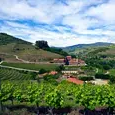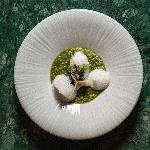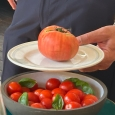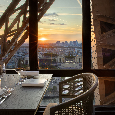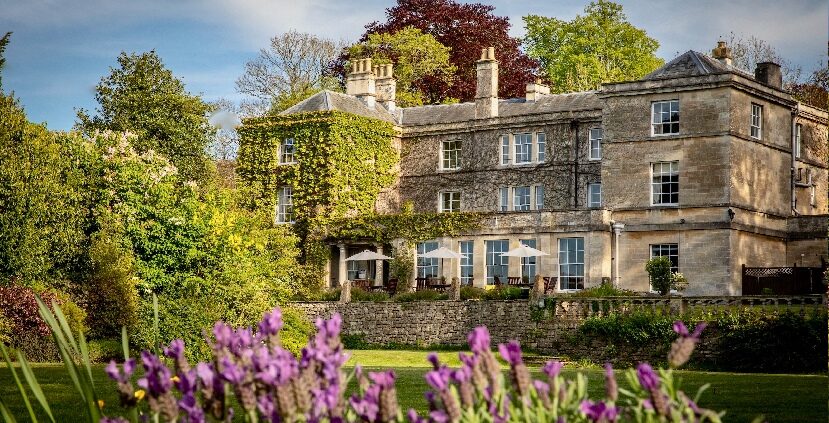
Burleigh Court is a tempting Cotswold country escape and yet his is a rural retreat with a difference. Guests and non-residents can go foraging as they acquire the knowledge to safely search for food. Discover tastes long lost to the 21st century whilst gathering ingredients for lunch. Perhaps there is such a thing as a free lunch?
Glorious Cotswolds views
This elegant Manor house has overlooked Golden Valley for nearly two centuries. Thick-sinewed ivy grows alongside the pink roses which creep across the honey-coloured stone. Strategically placed deckchairs, hammocks and benches give views across the croquet lawn and beyond. The valley dramatically changes as the seasons progress.

That valley drops away from the 600 ancient acres of Minchinhampton Common and is now cared for by the National Trust. Cattle graze amongst delicate wild orchids and wild cyclamen. Descending into the valley, a patchwork of fields is bordered by some of the Cotswold’s 4,000 miles of scenic drystone walls.

Guests stroll round the estate literally for a breath of fresh-air. Traditionally yew trees mark out the boundaries of an estate. A rare moss, which only grows in clean air, thrives on those yews and their neighbouring pines. Although Burleigh Court is less than two hours from Birmingham and London, this is a different world.
Rural relaxation
Country scenes artwork welcomes you to Burleigh Court. Check out of urban stress and check in to rural relaxation. Comfy country-house sofas await by the log fire. Within the Georgian manor, the rooms have steadily been restored over recent years, some featuring romantic four poster beds and spa baths. Rooms are sufficiently spacious to take bold Amanda Ferragamo wallpapers contrasting with quieter botanical prints.

There is the discrete aura of a Victorian lady’s boudoir to the rooms. Antique furniture, window shutters and marble-topped dressing tables create the sense of a quieter, more refined era. Yet, there are reassuring reminders of the 21st century. A digital radio disguised as an archaic wireless. A 55 inch wall-mounted flat-screen television and a Nespresso espresso machine. Each of the bedrooms has its own personality, created through distinctive decor. Room names – foxgloves, petunia, ash, hazel, sycamore, lavender, bluebell and rose – paint a rural picture.
"Check out of urban stress and check in to rural relaxation. Comfy country-house sofas await by the log fire."
It is very tempting to hunker down at Burleigh Court for a game of croquet. Perhaps afternoon tea on the terrace. Or drinks by the log fire. In summer there is also the temptation of a dip in the stylish plunge pool. Yet, the hotel is well-placed for exploring Cheltenham, Cotswold villages, Highgrove, Slimbridge and Westonbirt Arboretum. Alternatively, guests can see the countryside with a new vision after joining one of Burleigh Court’s foraging experiences or arranging a private lesson.

The lost art of foraging
Emmanuelle Paulson, Burleigh Court’s kitchen gardener and foraging guru, teaches residents and non-residents how to see our environment in a new light. Once homo sapiens were hunter-gatherers. Now we fear for our food security and worry that the supermarket shelves may empty. For most of us the occasional spot of blackberrying or a quest for sloes to put in our gin is the only foraging we do.

Spending more hours in cyberspace than with nature, we have lost touch with the world around us. Unable to sense the subtle change of seasons that transforms nettles from tender to toxic. “Never munch on a hunch,” Emmanuelle advices as we begin our foraging education. Carefully examining mushrooms growing by a dry stone wall, she returns home to her books to cross-reference colours and features. Checking that this is a likely habitat for a species is another wise precaution. Finally, she harvests. And remember that leaves and berries are usually red for a reason. Red signals danger.

“Could you survive on what you forage?” a guest asks. “It would be very difficult. In Britain, winter’s tough. But most of the year I only buy flour, oats, pasta and rice from the shops,” replies Emmanuelle. Obviously, pickling and preserving are key skills for getting through winter. A hedgerow ketchup is Emmanuelle’s signature condiment. “Autumn’s surprisingly good,” adds Emmanuelle, “in many ways it is a second spring with all the nuts and berries.”
"For most of us the occasional spot of blackberrying or a quest for sloes to put in our gin is the only foraging we do"
Foodie experiences at Burleigh Court
No surprise that Emmanuelle bakes her own bread but it is a surprise that she buys commercially produced flour. She uses this to tone down the strong flavours of the seeds that she gathers as taste buds have become attuned to milder and sweeter flavours. Many of nature’s flavours are bitter. Foraging is not just about food. Washing powder never appears on Emmanuelle’s shopping list. Conkers and ivy leaves, providing a natural lather, are added to the wash. Fields and hedgerows are her pharmacy too. Elderflower syrup boosts the immune system.

Foragers collect ingredients for their lunch, which is taken back in Burleigh Court’s oak-panelled restaurant. Guests dining in a two AA rosette restaurant, pushing hard for three rosette recognition, can try foraging flavours without walking the lanes and woodland. A forager’s salad of tomatoes and micro-herbs is a flagship starter. Sustainability is key concept for the restaurant.
Sustainability at Burleigh Court
Only Old World wines are listed on the menu to reduce miles travelled. Recently, Emmanuelle has acquired a large greenhouse to increase the quantity of produce grown locally. Guests can be be reassured that both hotel and restaurant are constantly reducing their environmental footprint. Burleigh Court is not just a charming country house with splashes of luxury. It is a rustic escape which gives guests surprising insights into how we used to live and how we live today.






